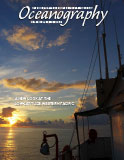First Paragraph
Purpose of Activity
This activity provides hands-on exploration of the impact of Rayleigh distillation on the isotopic composition of water in different experimental reservoirs. Similar experimental methods have been a primary source of information for understanding isotopic variations in the natural system. Students are exposed to fundamentals of isotope geochemistry, isotope measurement using a cavity ring down spectroscopy (CRDS) instrument (e.g., Picarro, Los Gatos Research), or an isotope ratio mass spectrometer (IRMS) and associated calculations. Archived data from this project are available for instructors who wish to use the lab but lack access to a CRDS or IRMS instrument. This activity builds a foundation for exploration of stable isotope geochemistry appropriate for students in numerous courses.

